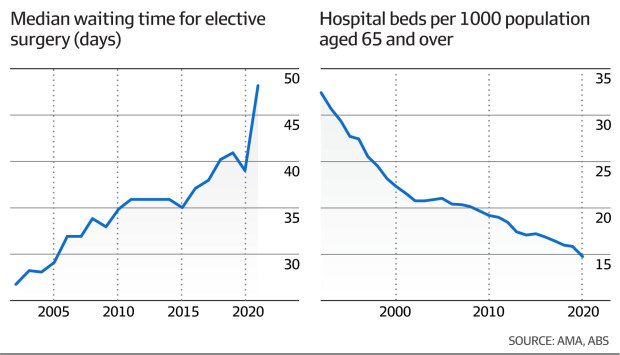Doctors should embrace bitcoin, says cancer surgeon | CPT PPP Coverage
Cryptopolytech (CPT) Public Press Pass (PPP)
News of the Day COVERAGE
200000048 – World Newser
•| #World |•| #Online |•| #Media |•| #Outlet |
View more Headlines & Breaking News here, as covered by cryptopolytech.com
Doctors should embrace bitcoin, says cancer surgeon appeared on www.afr.com by Tom Richardson.
The price of the divisive digital asset has surged 80 per cent this year and was traded at $US29,410 on Tuesday morning, thumping the returns of other asset classes. Over the past five years, it has returned 255.8 per cent as an eclectic mix of professionals, tradies, speculators, mum-and-dad investors, libertarians, and nihilists embrace the mania.
Dr Sammour first bought “a few bitcoin in 2015” and has actively bought more since then, but he declined to specifically recommend that healthcare professionals invest in the cryptocurrency.
Alternative option
“Most surgeons will spend their money on more houses or shares,” he said. “The system teaches them to speculate and I think it’s destructive as it raises house prices for people that don’t have lots of money. Bitcoin might be an alternative option to store wealth without the deleterious societal consequences.”
Australian doctors are considered to be among the most engaged investors among non-financial professions. According to Australian Taxation Office data, surgeons are Australia’s most prolific real estate speculators, with at least 43 per cent owning an investment property.
Dr Sammour said bitcoin should appeal to doctors, given they are being hit with a slew of rising professional costs.
The British-born bitcoin apostle said US Bureau of Labour Statistics data backed his claim that the average cost of US hospital services had soared 10 per cent per year since 2000 because scarce assets such as hospital beds or luxury properties rose in price faster than assets that were easy to mass-produce such as televisions.
As a consequence, he said Royal Adelaide Hospital now offered fewer beds per head of population than at any time in history.
“A 2 to 3 per cent increase in [government] funding per year is unlikely to keep up with the cost of delivering the service. That’s why hospital beds are going down, elective surgery lists are getting longer, and ambulance ramping is increasing even though we spend more.
“Medicare and the healthcare system need more funding because the current model is not keeping pace with healthcare inflation or the price of healthcare,” he said. “If you see how far house prices go up compared to CPI, you can imagine a hospital bed is more expensive than an apartment bed because it requires a lot of additional resources to staff. If an apartment bed goes up a certain amount per year, you can expect a hospital bed to go up even faster because they’re harder to make.”
To back up his argument, Dr Sammour said the construction cost of the Royal Adelaide Hospital blew out to $2.4 billion, making it the third most expensive building in history at the time, ahead of more famous global landmarks including the Burj Khalifa in Dubai, London’s The Shard and the Taipei 101 building.
The hospital, which spans three city blocks, provides 800 beds to a South Australian catchment area of 1.6 million people at a ratio of one bed to 2000 people.
This compares with the prior Royal Adelaide Hospital, which was completed in 1967 at the cost of $100 million, and provided 900 beds for a population of 600,000 on a ratio of 1 bed to 800 people.
Going back to 1877, the city’s hospital cost £50,000 and provided 200 beds for a population of 100,000 on a ratio of 1 bed to 500 people, Dr Sammour said.

The bitcoin evangelist said central banks’ loose monetary policies had resulted in a misallocation of resources, which rewarded financiers, bankers and asset managers close to the funding source, but harmed unionised healthcare professionals.
The cryptocurrency’s emergence as a new asset class remains controversial because of its huge energy usage, relatively slow processing times, and claims that it relies on the greater fool theory to attract new buyers as early promoters sell out.
FEATURED ‘News of the Day’, as reported by public domain newswires.
View ALL Headlines & Breaking News here.
Source Information (if available)
This article originally appeared on www.afr.com by Tom Richardson – sharing via newswires in the public domain, repeatedly. News articles have become eerily similar to manufacturer descriptions.
We will happily entertain any content removal requests, simply reach out to us. In the interim, please perform due diligence and place any content you deem “privileged” behind a subscription and/or paywall.
CPT (CryptoPolyTech) PPP (Public Press Pass) Coverage features stories and headlines you may not otherwise see due to the manipulation of mass media.
First to share? If share image does not populate, please close the share box & re-open or reload page to load the image, Thanks!



